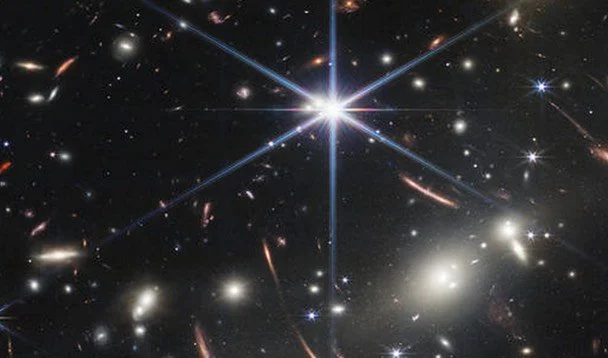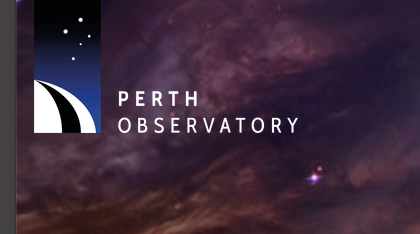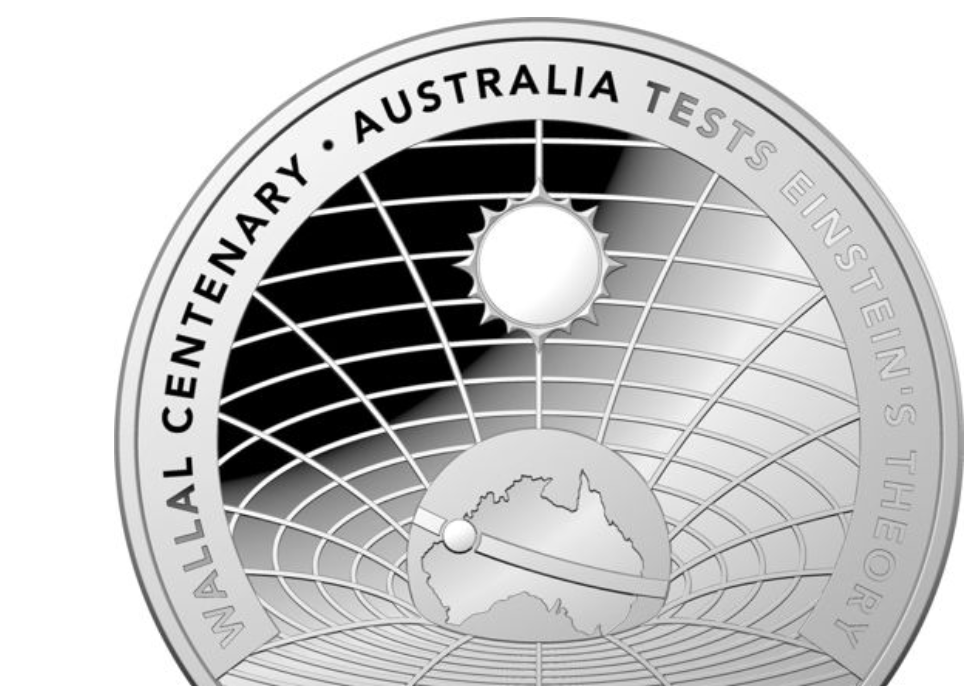is a proud sponsor of the Wallal Expedition Centenary
Proving Einstein Theory of Relativity
On 1922 August 20, a 20-strong scientific team, together with a naval party of 10, left Fremantle on one of the major scientific expeditions in Western Australian history. After picking up further personnel at Broome, the party proceeded to the isolated post and telegraph station of Wallal on the northern coast of Western Australia. Their task was to measure with great care the deflection of starlight by the Sun during the total solar eclipse of 1922 September 21. Specially designed photographic equipment of very high quality was used and meteorological conditions were excellent. As a result, measurements were obtained for well over a hundred stars.
Led by UWA Professor Alexander Ross, the expedition to the north coast of Western Australia was a heroic effort involving astronomers, filmmakers, aviators, physicists, mathematicians, computer scientists, and the Indigenous Nyungumarta people who welcomed the group to their land.
This is a story of science, sailing ships, surf and donkeys, and innovative ideas that changed our understanding of space, time and gravity, and showcased Western Australia as a significant player in world science. This set the stage for recent discoveries of black holes and neutron stars crashing together to create powerful explosions that send gravitational waves echoing across the universe.
The two-week centenary celebrations feature a range of events and activities, including:
100 years ago the Wallal eclipse in WA proved that space is curved and warped
100 exhibits
100 meters of exhibition panels about donkey trains and sailing ships, black holes and gravitational waves.
20 large sculptures “Drawing in Space” by Mark Grey-Smith
26 special schools lectures: 1500 students registered
1.5m replica of the official Wallal Centenary coin...last minted coin with the Queen on it.
One $250,000 LIGO test mass mirror
Two public lectures by Paul Davies and Tamara Davis
One Art-Science Forum
Four 2020 PMs science prize winners special seminar on gravitational waves. 1 Einstein-First activity zone for kids.
One working mini-gravitational wave detector.
12-day exhibition finishing 2 October
0 : the cost of the exhibition
UWA Wallal Expedition Centenary
This September, The University of Western Australia is celebrating the centenary of the Wallal eclipse expedition - an iconic event that proved Albert Einstein’s theory of relativity.
From Sep 20th to Oct 2nd, 2022, 10:00am - 4:00pm.
As part of the centenary celebrations, visit the Winthrop Hall Undercroft for a special exhibition created by scientists, educators and renowned WA artist Mark Grey-Smith, designed to take you on a journey that starts in Wallal and finishes with the astonishing discoveries of black holes all over the universe.
Or join us for public lectures with internationally acclaimed physicist, cosmologist, and astrobiologist Regents' Professor Paul Davies AM, and Australian astrophysicist and ABC presenter, Professor Tamara Davis AM.
Or, register for FREE talks and workshops for school students on topics from black holes to quantum computers.
Understanding our place in the universe.
The science, engineering and technology advances underpinning the cosmic quest.
What is the elusive "dark energy" that's accelerating the universe? Why is the universe mathematical? Is time travel possible? What happens when a black hole evaporates?
Hear from these eminent speakers from around the globe answer these questions as we explore what’s shaping the universe and our existence!
Paul Davies, Best-selling science author and renowned theoretical physicist, cosmologist, astrobiologist
Tamara Davis, leading astrophysicist, specialising in dark energy and dark matter
David Blair, Ground-breaking researcher in gravitational wave discovery
Venue: Engineers Australia WA Auditorium at 712 Murray Street, West Perth WA
Tue 20 Sep 2022 - 5:30 pm to 8:00 pm
West Australian Museum Wallal Article
Wallal, Western Australia The most ideal place on Earth to confirm Einstein’s theory.
Wallal Downs Station, a remote station 300 kilometres south of Broome on Eighty Mile Beach, was deemed ‘the most ideal place on Earth to view a total eclipse of the Sun and prove Albert Einstein’s Theory of General Relativity.
Read the article and see photos taken in 1922.
Published in 1916, this theory explains that what we perceive as the force of gravity, in fact arises from the curvature of the space-time continuum.
Einstein theorised that, as objects experience gravitational attraction to each other, space-time warps around the objects, causing it to become curved. This warping of space-time can explain how objects, including planets, behave as they move through space.
Wallal Expedition Centennial Talk & Calver Telescope Viewing
Learn about this expedition, what it meant for astronomy and Einstein’s Theory, and the role Perth Observatory played, through a talk from Perth Observatory volunteer Arthur Harvey. Stay late and have a look through our Calver telescope, or book in on a special tour on the days leading up to the talk to get to look through our Calver telescope and get taken back 100 years in astronomical history.
Location: Perth Observatory
Date: Saturday, 24th of September
Time: 7:00 pm (Doors open at: 5:30 pm)
Birth of a Planet Planetarium show at Scitech
To learn about the Wallal Expedition join Scitech for our Birth of Planet Earth Planetarium show playing during the school holidays (24 Sep – 9 Oct). This live presentation will travel to the northwest of Australia to recreate the remarkable eclipse seen by the scientists exactly 100 years ago, both from Earth and in space.
The significance of the eclipse, and the latest cutting-edge research into Einstein’s theories will be explored, inspiring visitors with the satisfying story of science in action and the thirst for knowledge that drives scientific progress.
Wallal Centenary Australia Tests Einstein's Theory - $5 1oz Silver Domed Proof Coin 2022
In 1922, the world focused on an expedition of international and Australian scientists to Wallal, Australia. The conditions in this remote corner of WA were ideal for photographing a total eclipse that was due on 21 Sept 1922.
The photographs taken during this ground-breaking expedition allowed for the precise measurements of the apparent position of the stars near the eclipsed Sun. This gave scientists the evidence that proved Albert Einstein’s revolutionary Theory of General Relativity! Discover a moment in history.
Einstein First alumni and Albermale staffer Alex Foppoli
UWA's Einstein-First project boosted by partnership with Albemarle
Albemarle Lithium has partnered with The University of Western Australia’s Einstein-First project to re-formulate school science.
Project coordinator Dr Jyoti Kaur from the UWA’s School of Physics said partnering with a company helping to pave the way toward a renewable energy future was a perfect match for Einstein-First. Full Article on UWA Website









